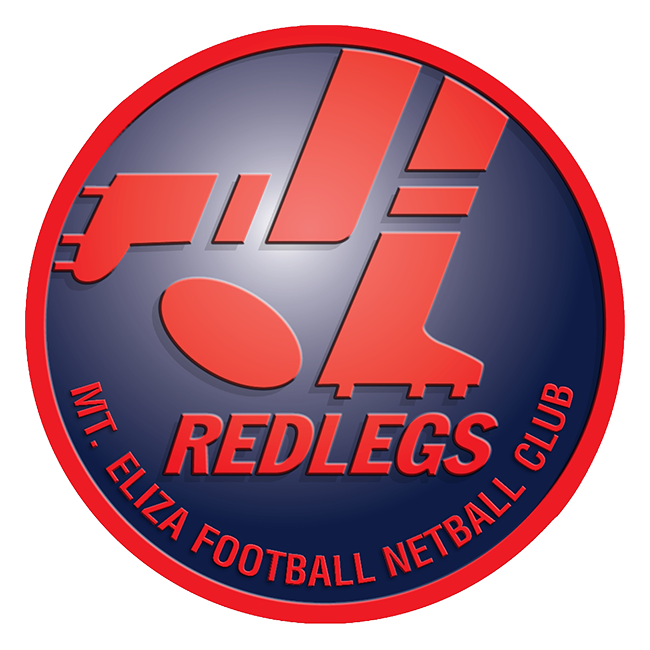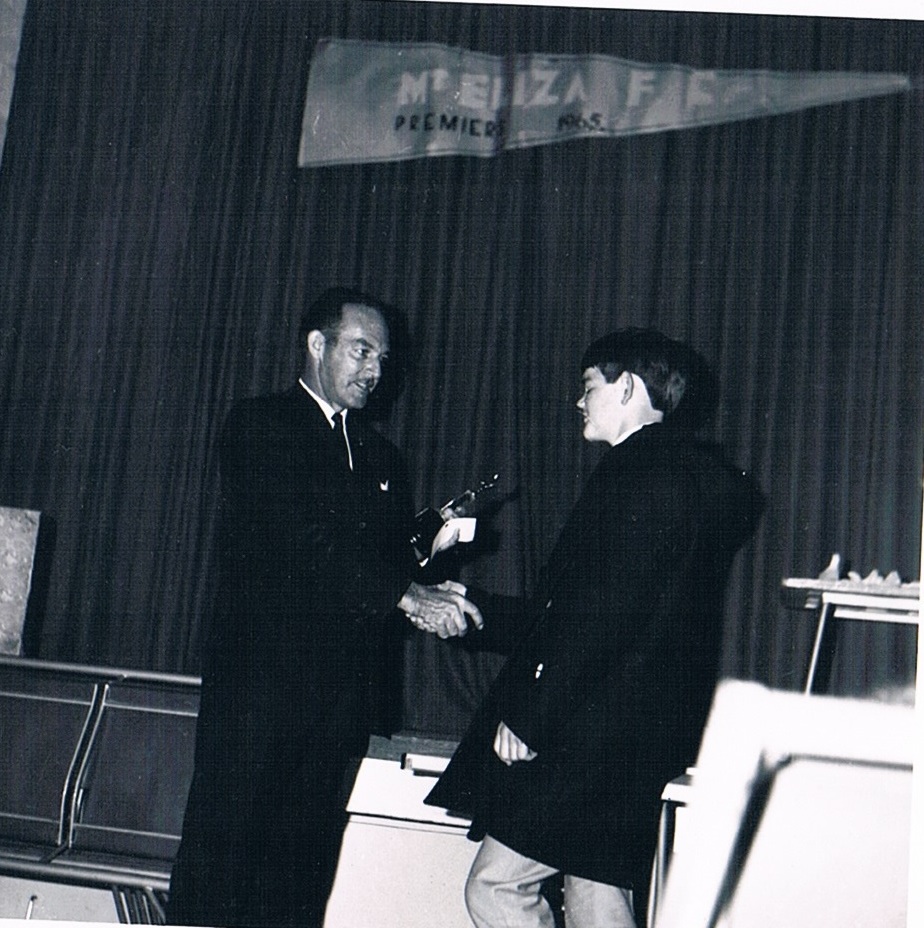OUR HISTORY
The Mt Eliza Football Club was formed at a meeting held on the 7th of July, 1964.
The Peninsula boasted two football leagues in the 60s – the MPFL in which the powerhouses of Peninsula football such as Chelsea, Frankston, Mornington, Sorrento and Hastings played and the Nepean Football League which was of a slightly lower standard and home to Red Hill, Dromana, Rosebud, Bonbeach, Langwarrin and others. Until the foundation of the Mount Eliza Football Club, local players wishing to try their luck either made the journey north to Frankston or south to Mornington.
The genesis of the Mount Eliza Football Club as we now know it, can be traced back to 1963 and the desire of a group of Grade 6 students at Mount Eliza State School to play competitive football. That year, Frank Boyd, Richard Tenniswood and Bill Klauer complained to their schoolteacher, Alan Young, that Mount Eliza did not have a football club.
As a result, in 1964 an unofficial Under 15 side was organised, coached by Jimmy Klauer, made up mainly of boys from the MEPS and Peninsula School, which played scratch matches against clubs who were having a bye in the local competition.
Alan Young was elected Inaugural President , Ted Hook, another teacher, Secretary and Coach, and Ernie Barnard Treasurer. Local GP, Norm Dalton, became the Club Doctor. The Club entered an official Under 15 side in the Nepean Junior Football League for the 1965 season and Peter Tamagno was named captain.
Under Ted Hook’s guidance, the team proved competitive, finishing fourth and qualifying for the finals. After a successful finals campaign, held at the Rosebud Oval, the inaugural Mount Eliza Under 15 side defeated Bonbeach to take home the flag, Robert Chester was named Best on Ground. It had been a remarkable effort for a first-year club.
After the victory, Club President Alan Young presented each player with a Foundation Year Medal, inscribed with the words, “Mt Eliza FC Foundation Year – 1965 – Premiers”. Other trophy winners included Big Will Esman, Peter Watts John Dalton, Peter Tamagno and Greg McDonald. Tamagno kicked a staggering 71 goals from the centre that year and later trained at Melbourne under the great Norm Smith.
Flushed with the success of this first year, supporters urged Ted Hook to form a senior team. Ted elicited sufficient interest for Mount Eliza to enter a senior side and an Under 15s, in the Nepean League in 1966. That year, Navy only had one side, which played in the firsts competition and so it was that Mount Eliza was rostered to play, as Mount Eliza, in the place of the non-existent Navy in the seconds. Club colours were Gunmetal Grey with a Gold Collar, Cuffs and “V”……
The juniors had played their scratch matches on the oval behind the Mount Eliza State School, which had white painted gumtree saplings as goalposts and no changing rooms. Whilst the new senior team trained there by the lights of the supporters’ cars, the limited facilities were not of sufficient standard to hold Nepean League senior games. Early matches were played at the Morningstar Boys Home ground whilst a search began for a new home ground.
In 1966, the Football Club made submissions to the Mornington Council for a football ground to be built in the Ranelagh Estate on the area that is now known as the Howard Parker Reserve. However, the Council refused the Club’s advances stating the ground was too small for anything but junior games. The local paper suspected that football was too “uncouth” for the Mount Eliza Village residents.
Instead, the Club was told that its new home ground would be situated on a forty acre site near the railway line in Wooralla Drive, which was to be developed as a sporting precinct with three football ovals. The Club was not happy because it was considered that the Wooralla Drive ovals would be too far from the Mount Eliza township ….. but it had little choice.
Until the Wooralla Drive complex was completed, the Mounties became resigned to playing at Baden Powell. The ground’s drainage system was non-existent and seepage from the septic tanks above the Reserve would overflow onto the oval which, in the depth of winter, had hardly a blade of grass on it. Often we played in brown mud with an oily, septic slick on the surface.
Early members of the seniors in that first year included Co Captain-Coaches, Ted Hook and Charlie Wilson, Tom Polglase, Steve Watkin, David Stamp, George Grendan, Les Clarke Senior, Ian McWilliams, Dick Coppin, Greg and Terry Patterson, and Johnny Wallens. A rotating selection of Peninsula schoolboys also appeared.
Ted Hook’s duties as captain/coach of the seniors meant a vacancy existed for the coach of the juniors. Lance Mogford was subsequently appointed. Peter Tamagno again captained the Under 15 side, which finished second on the ladder. In the Juniors’ semi final, Will Esman entered Club folklore by kicking a goal after the siren for Mount Eliza to earn a spot in the Grand Final which we subsequently won. The Coach nominated Frank Boyd Best on Ground in the Grand Final. Two junior flags in two years for a newly formed club was a remarkable achievement.
The Seniors finished fifth in the second eighteen competition. The winner of the inaugural senior B&F is unknown but Co-Captain Coach, Charlie Wilson scored the most umpires’ votes and must have been a chance.
In 1967, the Committee, emboldened by its good showing in the seconds competition in 66, applied for the entry of three teams in 1967: Firsts, Thirds and Fourths. New jumpers were designed and expectations were high, but it was not to be. The Committee’s confidence was not reflected in the team’s performance, the firsts failing to win a game that year and finishing last with a percentage of 15.3
A highlight for the Fourths that year was an outstanding individual performance by Michael Davies, who kicked 18 goals in a game against Pearcedale/Baxter. Michael would go on to play for Hawthorn Under 19s and Reserves and in 1972 was a member of Hawthorn’s Under 19 Premiership side.
Johnny Wallens won the Club’s inaugural first eighteen Best and Fairest capping off a great all-round sporting year in 1967. In addition to the Football Club B&F, Wallens had also been a member of the Mount Eliza Cricket Club first eleven premiership team alongside two other Mount Eliza footballers, Tony Austin and Lance Mogford.
After such a disastrous first senior season, what happened next seems amazing to say the least. In 1968, rather than lick its wounds, the Club applied for and won admission into the MPFL beating other applicants Cranbourne, Rye and, ironically Crib Point against whom we had not scored earlier in the year. There must have been some persuasive arguments put by the Club’s delegates, for the Mounties to have been successful.
And so, after just three short years, and with two junior flags already in the bag, the Mount Eliza Football Club’s time in the Nepean League had come to an end. 1968 would bring new challenges as the Mounties took on the giants of the MPFL.
There is no doubt that the Mount Eliza Football Club, as we know it today, owes an immense debt of gratitude to those Mount Eliza State School students who agitated for their own team, and the committeemen and coaches of the early years who honoured their call.
Alan Young, Ted Hook, Charlie Wilson, Norm Dalton, Ernie Barnard, Frank McNees, Lance Mogford and others, were all determined to establish a footy club representing the Mount Eliza district. They would all be delighted to see how the Club has evolved in the years since.




